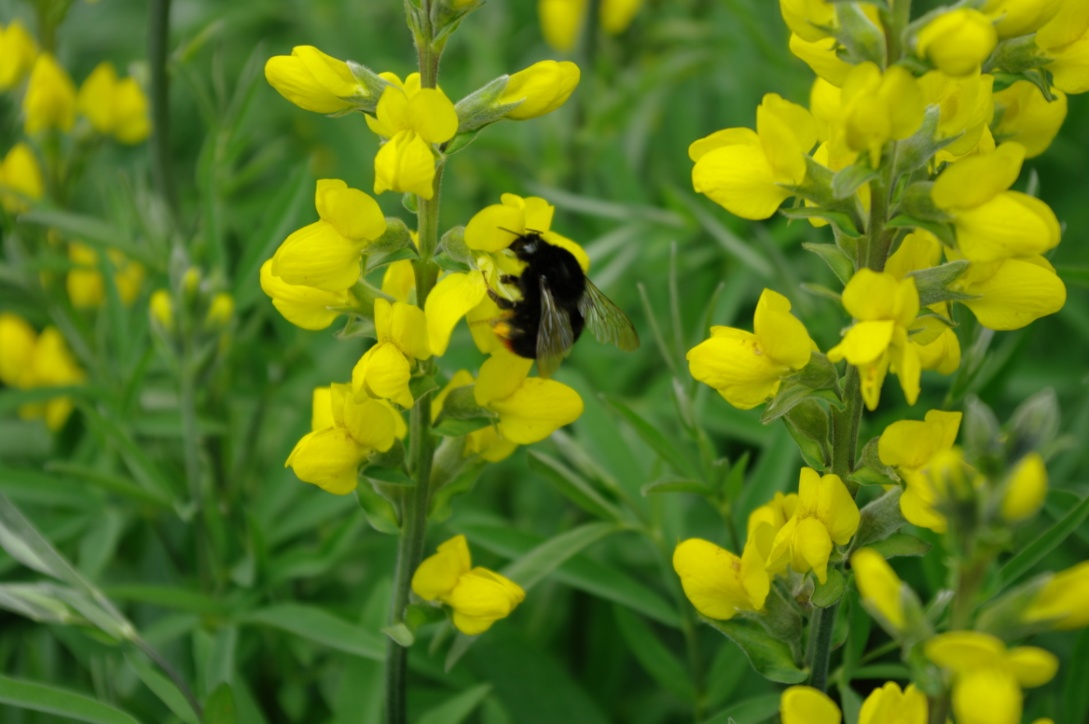Chapter 8
Pollination by Bees
Flowers pollinated by bees have the following characteristics:
- Shallow flowers with short floral tubes to match the length of the bee's tongue
- Bright white, yellow or blue flowers
- Nectar guides sometime only visible to bees
- Sugar-rich nectar
- Sticky scented pollen
- Sweet, mild scent
- A landing stage, e.g. Antirrhinum, Digitalis
- Sometimes highly adapted to particular bee species
Antirrhinum (snapdragon) flower showing lower petals forming landing stage for bees

Digitalis purpurea (foxglove) flower showing lower lip of tube forming a landing platform and spots guiding bee to nectaries at base of the corolla tube

A bee collecting pollen from a leguminous flower using lower petals as a landing stage

Inflorescences
A group of flowers clustered together is called an inflorescence. In insect-pollinated plants, a mass of colourful flowers make a bigger impact than a single flower, so they can be more easily seen by their pollinators (e.g. in Buddleja davidii). They can also provide a landing stage for insects to walk over to collect nectar and pollen from many flowers with the least amount of energy expended (e.g in Sedum spectabile). In wind-pollinated plants, the inflorescence enables the most efficient dispersal and entrapment of pollen, often in the form of catkins.
Inflorescence types are often characteristic for particular plant families so are a useful aid to identification. For example, the daisy family (Asteraceae) has a unique inflorescence called a capitulum. Umbels are characteristic of the carrot family (Apiaceae) and the onion family (Alliaceae), whereas a verticillaster is commonly found in the nettle family (Lamiaceae).
Sedum spectabile (ice plant) – providing a landing platform for bees

Echinacea purpurea(purple coneflower) – a capitulum

Allium spp. (ornamental onion) – an umbel

Lamium galeobdolon (yellow archangel) – a verticillaster
